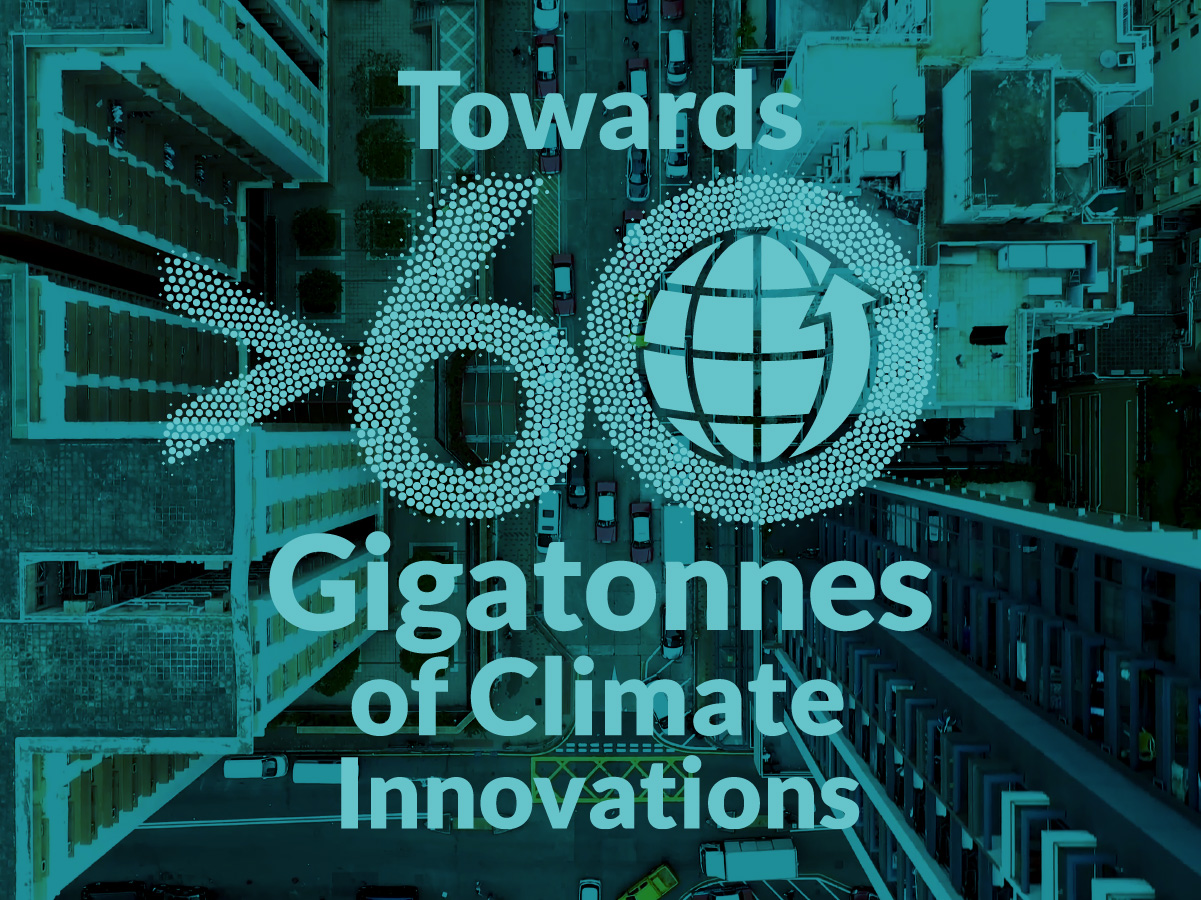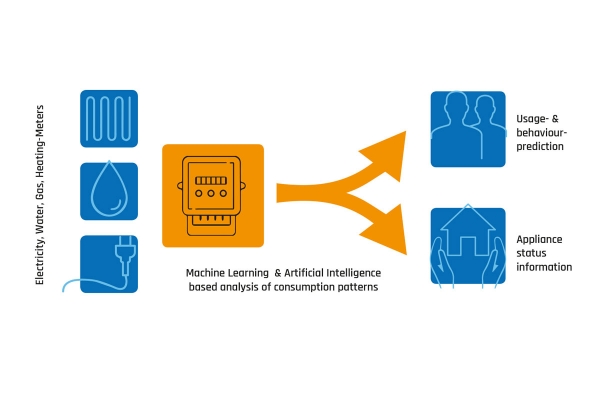Nominated innovations
1000 innovative clean energy solutions and > 150 framework enablers with the potential to deliver more than twelve gigatonnes of avoided emissions by 2030
These assessments are based on a basic avoided emission assessment. The overall concept of avoided emissions is that a solution (product or service) enables the same function to be performed with significantly less GHG emissions. The method of measuring avoided emissions, is to compare a baseline scenario without the enabling solution, with a scenario using the enabling solution; whereby the baseline represents the ‘business as usual’ (BAU) scenario.
These assessments are based on the framework document: The Avoided Emissions Framework (AEF) from September 2020

e-wash
e-wash wrote: Residential laundry cleaning is perhaps the greatest silent polluters to our rivers, streams, lakes and groundwater. We at e-wash are on a mission to change how the world cleans their clothes. We are developing a laundry solution that is not only environmentally friendly but also kind to sensitive skins... Source: EIT Climate KIC's ClimateLaunchPad
Denmark

e-wash
e-wash
e-wash wrote: Residential laundry cleaning is perhaps the greatest silent polluters to our rivers, streams, lakes and groundwater. We at e-wash are on a mission to change how the world cleans their clothes. We are developing a laundry solution that is not only environmentally friendly but also kind to sensitive skins... Source: EIT Climate KIC's ClimateLaunchPad
Currently unavailable

E - scooter racks
MiMo racks wrote: The problem is to start and end the daily journey. Therefore we want to propose racks that can be used to store e - scooters inside public trasportations, like busses, trains and trams. This is in order to encorage people to switch from cars to e - scooters to get to the city... Source: EIT Climate KIC's Climathon
Denmark

MiMo racks
E - scooter racks
MiMo racks wrote: The problem is to start and end the daily journey. Therefore we want to propose racks that can be used to store e - scooters inside public trasportations, like busses, trains and trams. This is in order to encorage people to switch from cars to e - scooters to get to the city... Source: EIT Climate KIC's Climathon
Currently unavailable

Doubling biopower plant electrical efficiency
Today's established technology for bio power is the steam cycle, in which 30 percent of the energy input results in electricity, with the remainder being heat and energy losses. Bio power plants are therefore primarily heating plants and, secondly, producers of electricity. Phoenix Biopower's technology has developed a different thermodynamic process. The first step is that the fuel is gasified under high pressure together with steam. The gas formed then drives a gas turbine where steam is used to optimize combustion. With this technology, efficiency is doubled, and electricity can be produced with up to 60 percent of the energy input.
Sweden
≈10

Phoenix Biopower AB
Doubling biopower plant electrical efficiency
Today's established technology for bio power is the steam cycle, in which 30 percent of the energy input results in electricity, with the remainder being heat and energy losses. Bio power plants are therefore primarily heating plants and, secondly, producers of electricity. Phoenix Biopower's technology has developed a different thermodynamic process. The first step is that the fuel is gasified under high pressure together with steam. The gas formed then drives a gas turbine where steam is used to optimize combustion. With this technology, efficiency is doubled, and electricity can be produced with up to 60 percent of the energy input.
≈10Mt CO2e/year

Double capacity of first generation EVs
DoubleEV wrote: In year 2010 nissan started to sell first truly ev for masses - nissan leaf, and as of today - around 300k cars were sold. First version of these car bears 24kwh battery, with real world range around 140-150 km per charge. As battery pack capacity decreases over time - there will be moment for ev owners to consider either buying new car or new battery pack. We plan to offer battery pack upgrade using modules built from densier cells (type 18650) to double capacity of battery pack up to 48kwh... Source: EIT Climate KIC's ClimateLaunchPad
Latvia

DoubleEV
Double capacity of first generation EVs
DoubleEV wrote: In year 2010 nissan started to sell first truly ev for masses - nissan leaf, and as of today - around 300k cars were sold. First version of these car bears 24kwh battery, with real world range around 140-150 km per charge. As battery pack capacity decreases over time - there will be moment for ev owners to consider either buying new car or new battery pack. We plan to offer battery pack upgrade using modules built from densier cells (type 18650) to double capacity of battery pack up to 48kwh... Source: EIT Climate KIC's ClimateLaunchPad
Currently unavailable

Dockit - "Love Food...Hate Waste"
Dockit wrote: Dockit aims to develop innovative software solutions to everyday restaurant problems, in particular, food waste. . - roughly 50% of food waste can be attributed to labour i. E. Human error. - 1 tonne of food waste equates to 2 tonnes of co2 equivalents. - food waste accounts for between 3-5% of total running costs in restaurants. . Dockit aims to significantly reduce the climate impact of food waste by tackling the issue of incorrect ordering in restaurants because "small changes can make a big difference"... Source: EIT Climate KIC's ClimateLaunchPad
Ireland

Dockit
Dockit - "Love Food...Hate Waste"
Dockit wrote: Dockit aims to develop innovative software solutions to everyday restaurant problems, in particular, food waste. . - roughly 50% of food waste can be attributed to labour i. E. Human error. - 1 tonne of food waste equates to 2 tonnes of co2 equivalents. - food waste accounts for between 3-5% of total running costs in restaurants. . Dockit aims to significantly reduce the climate impact of food waste by tackling the issue of incorrect ordering in restaurants because "small changes can make a big difference"... Source: EIT Climate KIC's ClimateLaunchPad
Currently unavailable

Disrupting social housing challenge
Abundance.HOME wrote: Within the next 30 years a humongous need for new buildings will occur. An estimated population growth up to ~9 billion humans besides an additional worldwide movement of 20% into urban areas. The result will be an increased scarcity which will lead to estimated 1/3 of urban dwellers (1. 6 billion !) who will struggle to secure decent housing by 2025. Only in germany there is an annual need of 80. 000 of social housing units. . Sadly by today, the construction industry is already by far the largest consumer of raw materials on the planet. 35% of global waste is accounted by construction and demolition activities. New approaches are urgently needed. ... Source: EIT Climate KIC's ClimateLaunchPad
Germany

Abundance.HOME
Disrupting social housing challenge
Abundance.HOME wrote: Within the next 30 years a humongous need for new buildings will occur. An estimated population growth up to ~9 billion humans besides an additional worldwide movement of 20% into urban areas. The result will be an increased scarcity which will lead to estimated 1/3 of urban dwellers (1. 6 billion !) who will struggle to secure decent housing by 2025. Only in germany there is an annual need of 80. 000 of social housing units. . Sadly by today, the construction industry is already by far the largest consumer of raw materials on the planet. 35% of global waste is accounted by construction and demolition activities. New approaches are urgently needed. ... Source: EIT Climate KIC's ClimateLaunchPad
Currently unavailable

Dispo
Dispo wrote: Coming from the above mentioned situation, dispo is the idea of a technology that could reduce the volume of the already generated waste down to only 10% of the original volume. As result, it will reduce the number of visits of the waste transport vehicles and aconsequently reduce the service fees and the co2emissions associated with the process. Such technology already exist in the markets at bigger sizes for the waste to energy power plants, as it improves the calorific properties of waste based fuels. But till now does not exist for kitchen or building sizes . Dispo will be designed in different sizes 1- kitchen size that could treat 5 kg/day of house/office use... Source: EIT Climate KIC's Climathon
Germany

Dispo
Dispo
Dispo wrote: Coming from the above mentioned situation, dispo is the idea of a technology that could reduce the volume of the already generated waste down to only 10% of the original volume. As result, it will reduce the number of visits of the waste transport vehicles and aconsequently reduce the service fees and the co2emissions associated with the process. Such technology already exist in the markets at bigger sizes for the waste to energy power plants, as it improves the calorific properties of waste based fuels. But till now does not exist for kitchen or building sizes . Dispo will be designed in different sizes 1- kitchen size that could treat 5 kg/day of house/office use... Source: EIT Climate KIC's Climathon
Currently unavailable

Dispersa Inc.
Dispersa Inc. wrote: At dispersa, we are harnessing the power of microbes to present low-cost, 100% biodegradable, and versatile specialty chemicals, such as surfactants, used in a variety of industrial applications... Source: EIT Climate KIC's ClimateLaunchPad
Canada

Dispersa Inc.
Dispersa Inc.
Dispersa Inc. wrote: At dispersa, we are harnessing the power of microbes to present low-cost, 100% biodegradable, and versatile specialty chemicals, such as surfactants, used in a variety of industrial applications... Source: EIT Climate KIC's ClimateLaunchPad
Currently unavailable

Disaggregation and predictor services
Twingz detects potential fire and/or water damage before it occurs. It does this by providing a fully transparent picture of your energy consumption through monitoring individual appliances all based on the end-user’s electricity and water meters. Using data disaggregation and machine learning, the innovation can prediction and detect discrepancies in usage patterns and therefore give warnings about possible malfunction and potential damage. At the same time, usage data is continuously available to end-users.
Germany
≈10

Twingz
Disaggregation and predictor services
Twingz detects potential fire and/or water damage before it occurs. It does this by providing a fully transparent picture of your energy consumption through monitoring individual appliances all based on the end-user’s electricity and water meters. Using data disaggregation and machine learning, the innovation can prediction and detect discrepancies in usage patterns and therefore give warnings about possible malfunction and potential damage. At the same time, usage data is continuously available to end-users.
≈10Mt CO2e/year

Diluteze
Diluteze wrote: Diluteze develops products that aid & protect people when working with potentially hazardous chemicals in the workplace, home or garden (e. G. Weed killers & detergent for example), achieving this with sustainable products that reduce the environmental impacts of potentially harmful chemical products, product that do nonetheless protect our crops and sterilize our hospitals... Source: EIT Climate KIC's ClimateLaunchPad
Ireland

Diluteze
Diluteze
Diluteze wrote: Diluteze develops products that aid & protect people when working with potentially hazardous chemicals in the workplace, home or garden (e. G. Weed killers & detergent for example), achieving this with sustainable products that reduce the environmental impacts of potentially harmful chemical products, product that do nonetheless protect our crops and sterilize our hospitals... Source: EIT Climate KIC's ClimateLaunchPad
Currently unavailable